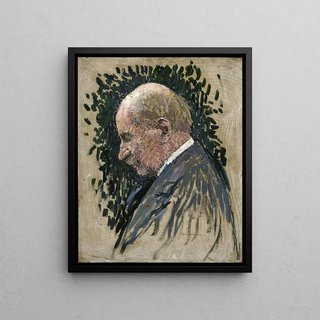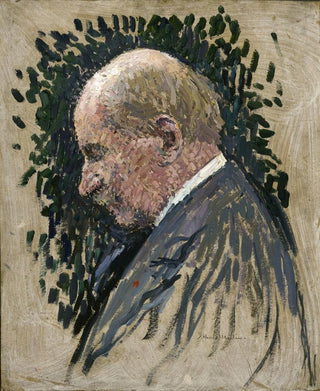Art print | Gustave Charpentier 1860-1956 composer - Henri Martin


View from behind

Frame (optional)
In the fascinating universe of art, some works transcend their era and stand as poignant testimonies of a unique sensitivity. The Gustave Charpentier 1860-1956 composer art print by Henri Martin is a perfect example. This piece, which unfolds with rare elegance, evokes an atmosphere that is both intimate and universal. It invites the viewer to immerse themselves in a world where music and painting meet, where each brushstroke seems to resonate with the notes of a forgotten melody. Through this work, Charpentier does not merely depict a composer; he captures the very essence of artistic creation, the passion that drives artists, and the magic of music.
Style and uniqueness of the work
Charpentier's style is distinguished by his ability to blend elements of realism and symbolism. In this piece, the choice of colors, textures, and shapes reveals a deep understanding of light and shadow, creating a vibrant and dynamic atmosphere. Every detail, from the face of the composer to the background, is carefully thought out to evoke a particular emotion. The way Charpentier plays with light, highlighting the features of the face while bathing the rest of the composition in a gentle shadow, demonstrates impressive technical mastery. This approach allows the viewer to feel not only the physical presence of the character but also the intensity of their inner world, their passion for music and art.
The artist and his influence
Gustave Charpentier, composer and painter, managed to establish himself as an emblematic figure of the early 20th century. His dual career allowed him to explore the synergies between music and visual arts, influencing many artists of his time. Charpentier believed that art should be a complete sensory experience, capable of touching the soul. His work is imbued with this philosophy, and every painting, every musical composition he created bears witness to this quest for harmony. By focusing on themes such as nature, music, and spirituality, he paved the way for a new way of perceiving the

Matte finish

View from behind

Frame (optional)
In the fascinating universe of art, some works transcend their era and stand as poignant testimonies of a unique sensitivity. The Gustave Charpentier 1860-1956 composer art print by Henri Martin is a perfect example. This piece, which unfolds with rare elegance, evokes an atmosphere that is both intimate and universal. It invites the viewer to immerse themselves in a world where music and painting meet, where each brushstroke seems to resonate with the notes of a forgotten melody. Through this work, Charpentier does not merely depict a composer; he captures the very essence of artistic creation, the passion that drives artists, and the magic of music.
Style and uniqueness of the work
Charpentier's style is distinguished by his ability to blend elements of realism and symbolism. In this piece, the choice of colors, textures, and shapes reveals a deep understanding of light and shadow, creating a vibrant and dynamic atmosphere. Every detail, from the face of the composer to the background, is carefully thought out to evoke a particular emotion. The way Charpentier plays with light, highlighting the features of the face while bathing the rest of the composition in a gentle shadow, demonstrates impressive technical mastery. This approach allows the viewer to feel not only the physical presence of the character but also the intensity of their inner world, their passion for music and art.
The artist and his influence
Gustave Charpentier, composer and painter, managed to establish himself as an emblematic figure of the early 20th century. His dual career allowed him to explore the synergies between music and visual arts, influencing many artists of his time. Charpentier believed that art should be a complete sensory experience, capable of touching the soul. His work is imbued with this philosophy, and every painting, every musical composition he created bears witness to this quest for harmony. By focusing on themes such as nature, music, and spirituality, he paved the way for a new way of perceiving the






